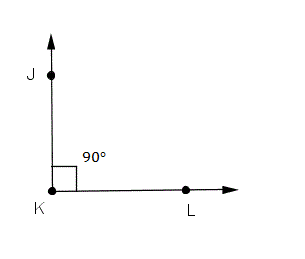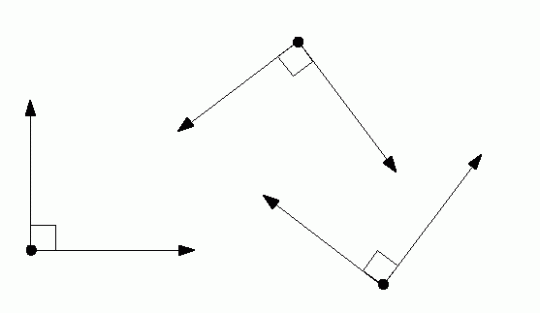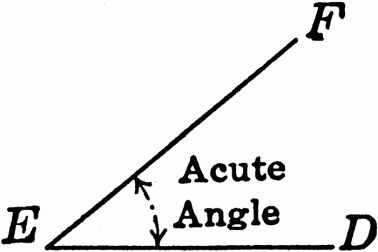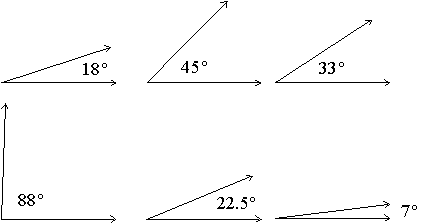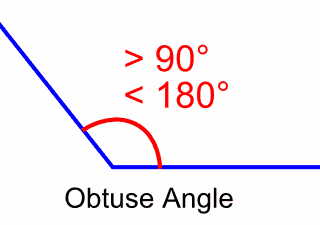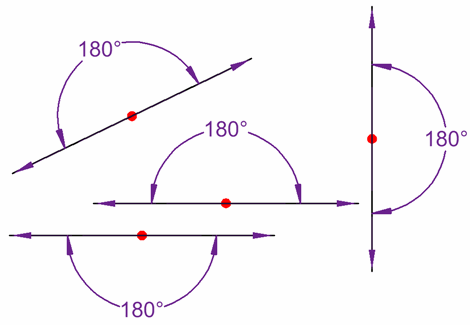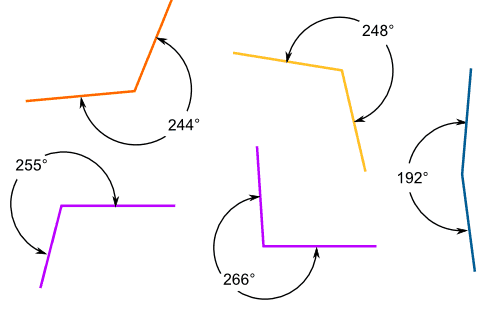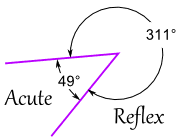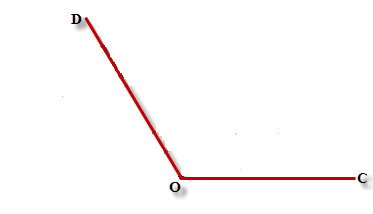5. TYPES OF ANGLES
You must know several types of angles as follows.
1. Right Angle, i.e. an angle with the measure of 90 degrees.
Here these figure!
figure 1.Right Angle with its measure 90 degrees.
figure 2. Right Angle with its symbol.
you can watch this VIDEO for right angle.
http://go.webvideoplayer.com/webvideo.player?d0qMD2URzX6ONBCaFIWe
http://go.webvideoplayer.com/webvideo.player?d0qMD2URzX6ONBCaFIWe
2. Acute angle, i.e.an angle with the measure is less than 90 degrees.
Here these figures.
figure 3. Area of Acute Angle.
figure 4. Every acute angle always less than 90 degrees.
You can watch this video.
3. Obtuse Angle,i.e. an angle with the measure is greater than 90 degrees but less than 180 degrees.
Here these figures.
figure 5. Obtuse angle with measure more than 90 degrees but less than 180 degrees.
figure 6. Each obtuse angle always be more than 90 and less than 180 degrees.
You may see this VIDEO.
4. Straight Angle, i.e. an angle with the measure 0f 180 degrees.
Here this figure.
figure 7. Straight Lines.
You may see this video.
5. Reflex angle,i.e. an angle with the measure is greater than 180 degrees.
Here these figures.
figure 8. Each reflex angles always more than 180 degrees.
figure 9. Reflex angle with measure 248 degrees.
figure 10. Reflex angle with measure 311 degrees.
FOR TRAIN YOUR BRAIN PLEASE KLIK.
4.DRAWING AND MEASURING THE ANGLES
We can measure an angle using protractor. You can see the protractor as the following picture.
Now, consider how to measure an angle by using protractor.
1. Consider the following  .
.
2. Place the protractor on  . Th e center of the protractor coincides with O and the horizontal line of the protractor coincides with OC as the picture in the following.
. Th e center of the protractor coincides with O and the horizontal line of the protractor coincides with OC as the picture in the following.
3. The picture above shows that  coincides with number 130 degrees (outer scale) and 60 degrees (inner scale). The measure of
coincides with number 130 degrees (outer scale) and 60 degrees (inner scale). The measure of  is 130 degrees because it is measured by using inner scale.
is 130 degrees because it is measured by using inner scale.
You can watch this video to know how measure an angle that less than 180 degrees.
http://go.webvideoplayer.com/webvideo.player?0jZSV2TBNpkdweY96IKW
http://go.webvideoplayer.com/webvideo.player?0jZSV2TBNpkdweY96IKW
You also can watch this video to measure an angle more than 180 degrees.
DRAWING ANGLES WITH A PROTRACTOR
To draw an angle with a protractor, proceed as follows:
EXAMPLE 1SOLUTION: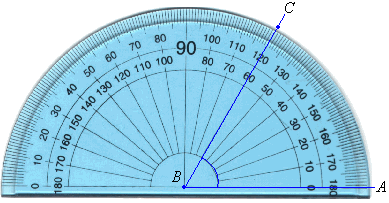
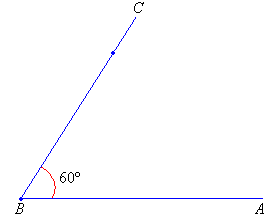 DRAWING REFLEX ANGLES
To draw a reflex angle (i.e. angle greater than 180º and less than 360º), proceed as follows:
EXAMPLE 2SOLUTION:
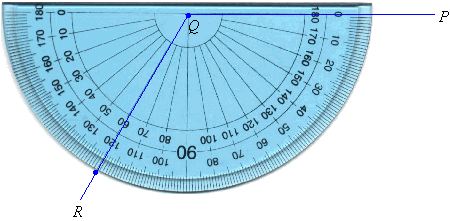
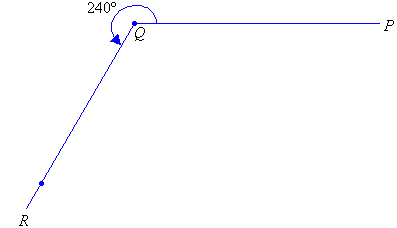 |
